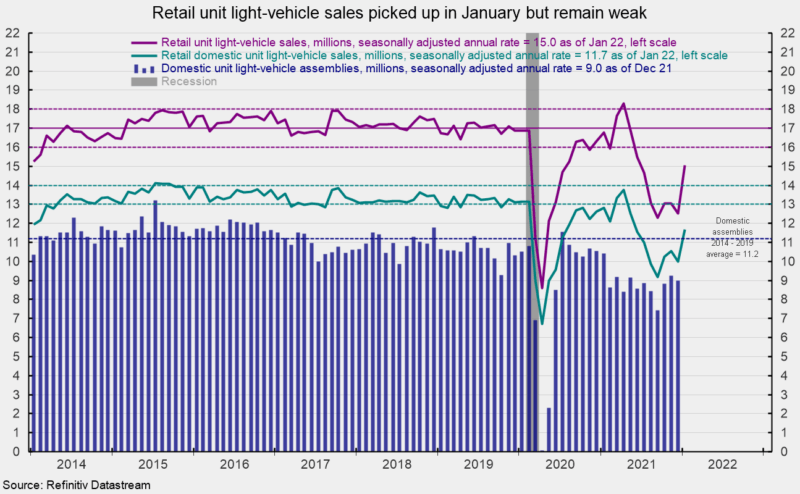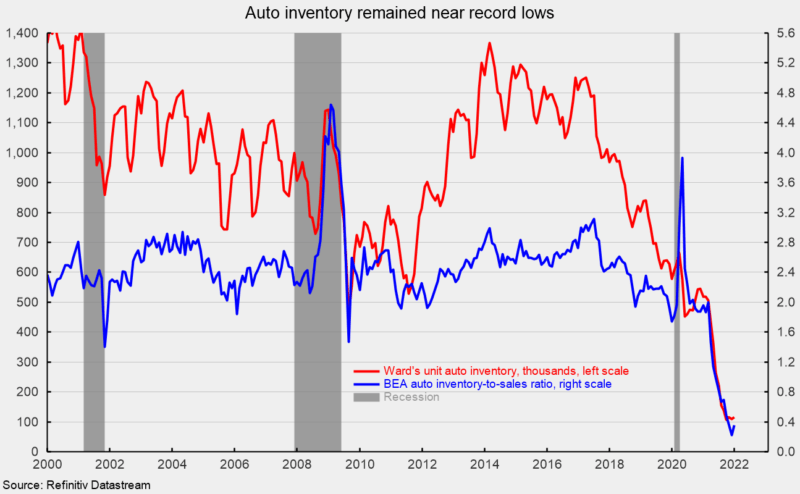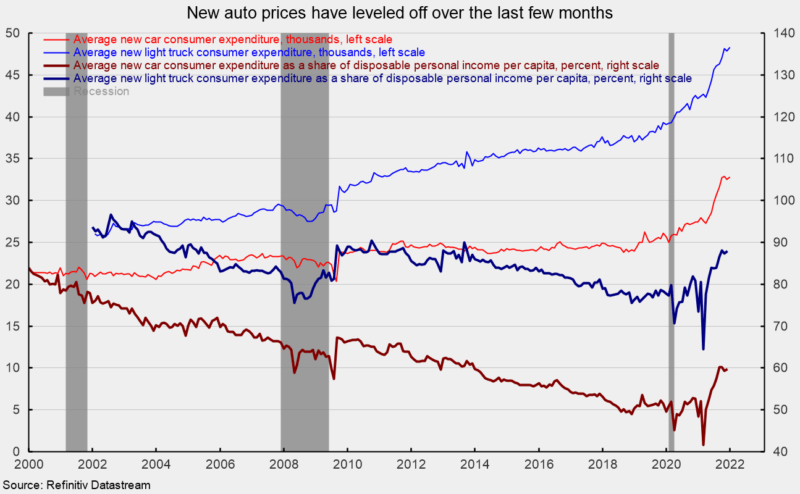Unit Auto Sales Improved While Assemblies, Inventories, and Prices Stabilize
Sales of light vehicles totaled 15.0 million at an annual rate in January, up significantly from a 12.5 million pace in December. The January result was the eighth consecutive month below the 16 to 18 million range, averaging just 13.6 million, but also the best tally since June 2021 (see first chart). Weak auto sales are largely a result of component shortages that have limited production, resulting in plunging inventory and surging prices.
Breaking down sales by origin of assembly, sales of domestic vehicles increased to 11.7 million units versus 10.0 million in December, a rise of 17.2 percent, while imports rose to 3.35 million versus 2.56 million in December, a rise of 30.8 percent. Domestic sales had generally been in the 13 million to 14 million range in the period before the pandemic, averaging 13.3 million for the six years through December 2019. The domestic share came in at 77.8 percent in January versus 79.6 in December.
Domestic assemblies decreased slightly in December, coming in at 9.0 million at a seasonally adjusted annual rate. That is down from 9.3 million in November but higher than the 8.8 million pace in October. The average over the final three months of 2021 was 9.0 million, still well below the 11.2 million pace for the six years through December 2019 (see first chart).
Component shortages, especially of computer chips, continue to disrupt production for most manufacturers, creating a scarcity for many models, leading to lower inventory and higher prices. Ward’s estimate of unit auto inventory came in at 115,400 in December, near the all-time low (see second chart). Inventory may be stabilizing as the average over the last four months of 2021 was 112,200. The Bureau of Economic Analysis estimates the inventory-to-sales ratio ticked up to 0.359 in December, up from a record low 0.227 in November (see second chart).
The plunging inventory levels have pushed prices sharply higher over the last two years. However, prices may be stabilizing with the average consumer expenditure for a car coming in at $32,840 in December, up 0.9 percent from November but below the $32,913 in October. The average consumer expenditure on a light truck rose to $48,309 (see third chart). The December levels represent 12-month gains of 19.6 percent and 14.6 percent, respectively.
As a share of disposable personal income per capita, average consumer expenditures on a car came in at 59.8 percent versus just 41.6 percent in March 2021 while the average consumer expenditure on a light truck as a share of disposable personal income per capita was 87.9 percent versus 64.5 percent as recently as March 2021 (see third chart). Both measures are still below their all-time highs.








